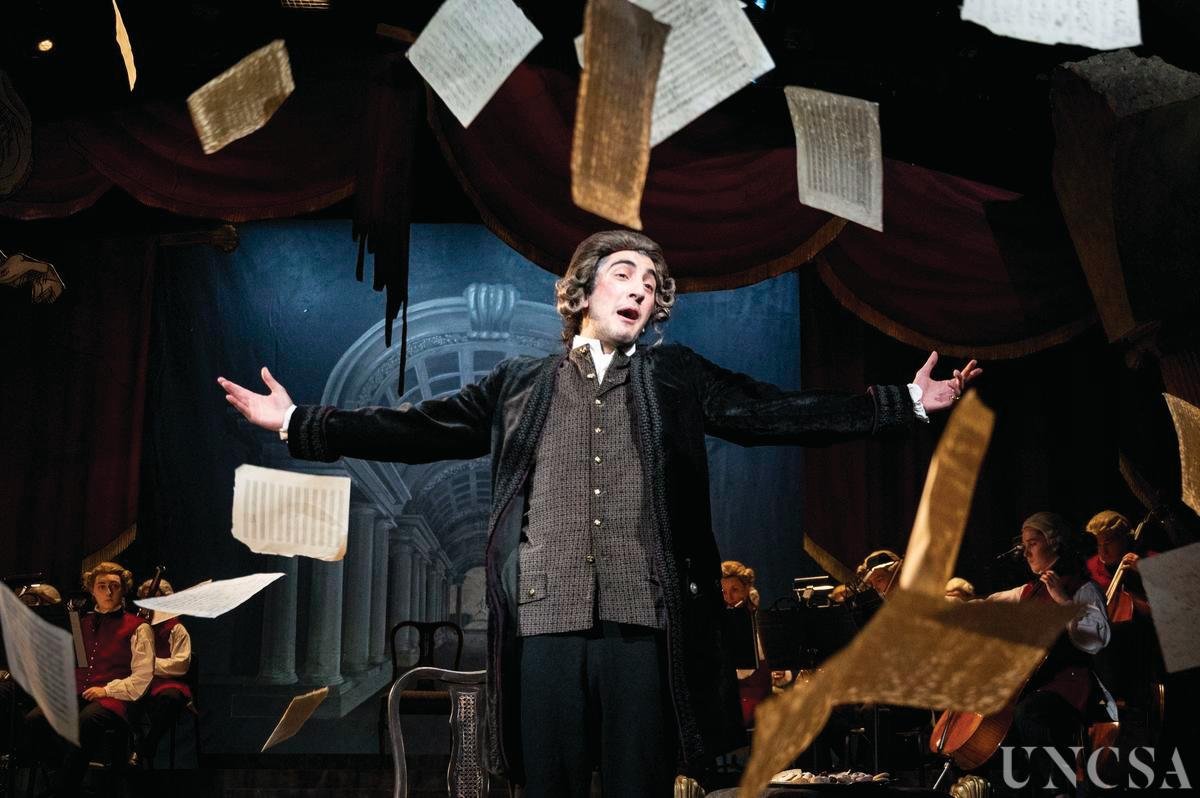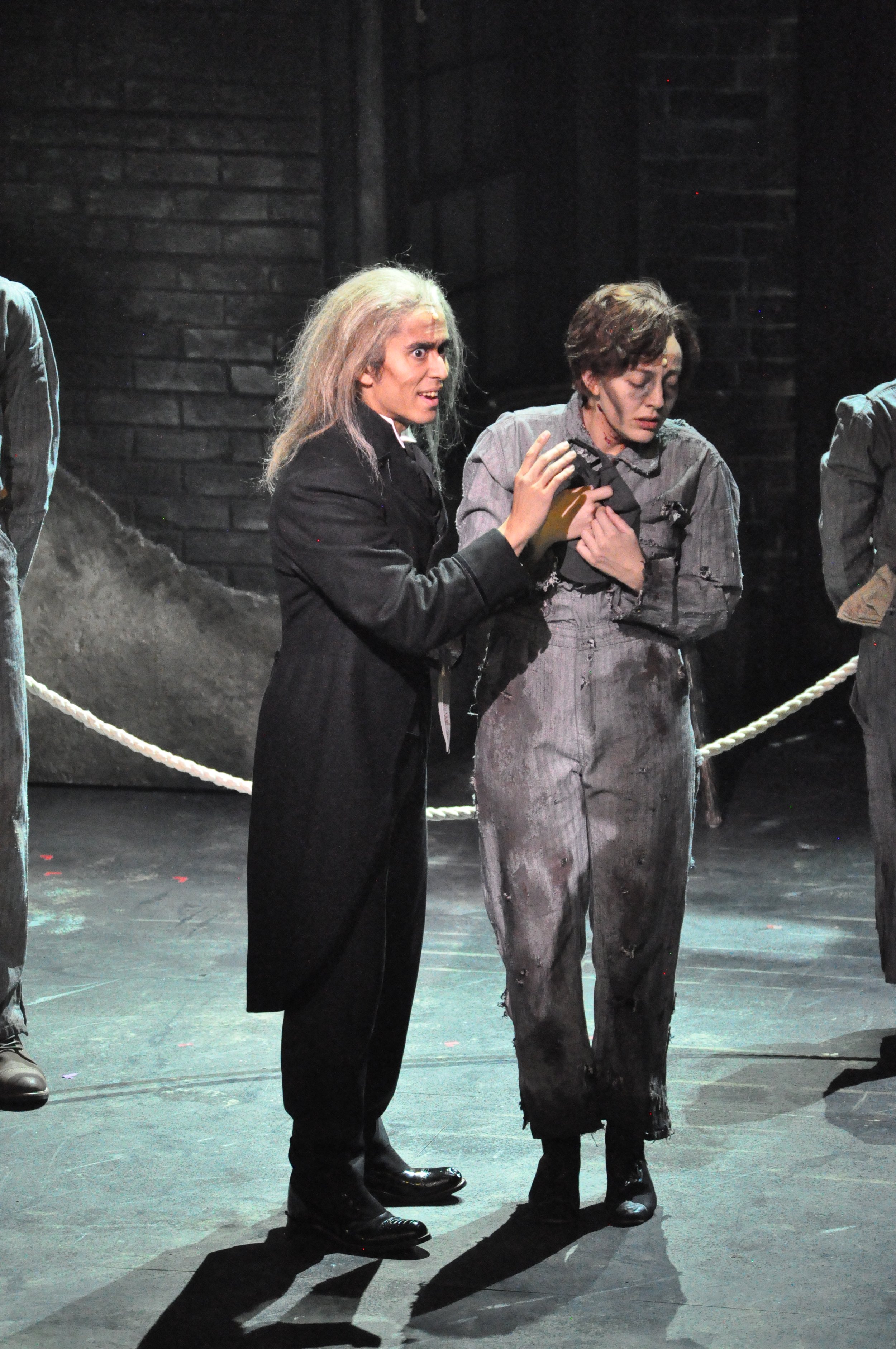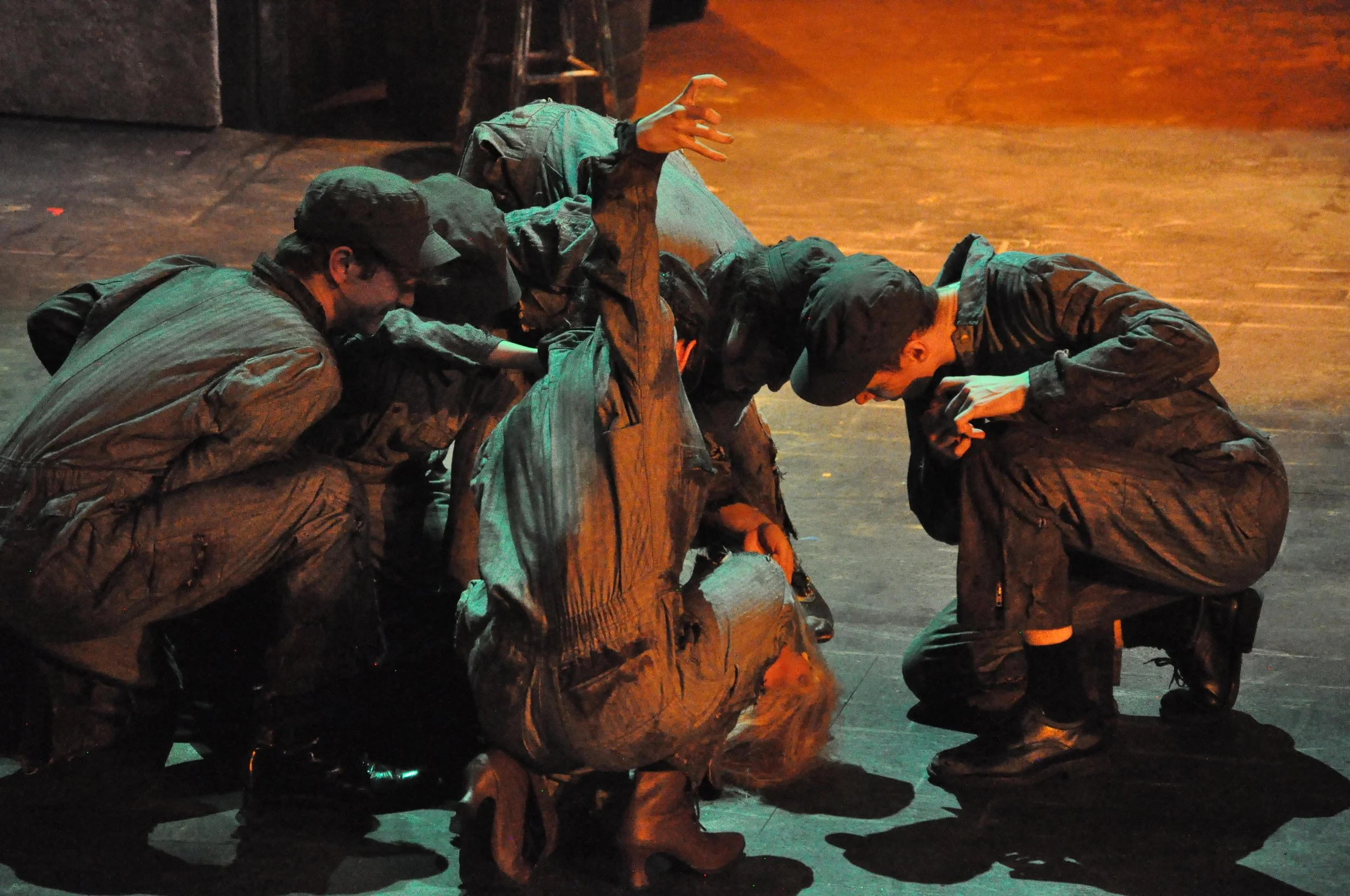
First Hand
Draper: Molly Klemm
Amadeus
Our team was responsible for Saleri’s costumes. We built an entire gold suit and altered many garments for his costumes. I was responsible for a rental black velvet frock coat.
The frock coat had been altered many times but the largest issues were the fit and covering a bright pink lining. After inspecting the coat, it was concluded that the shoulder had been taken in at the armscye without separating the lining. The result made the lining smaller than the exterior fabric which caused odd lumping around the neckline. Because all of the seam allowances had been removed and this was a rental jacket, there was no way I could make the alterations required to fix this issue. It also would have taken much more time than was available. The solution I came up with was to attach two rows of trim through all the layers of the fabric to stabilize the neck edge and to force it flat against the chest.
The second issue that needed to be addressed was covering the pink lining. The lining had previously been covered with a black lining fabric. The black lining covering the original lining was smaller than the width of the hem. This caused a strange buckling in the skirt and would not lay flat. I removed the lining panels that were causing the pulling and replaced them with larger pieces. With those replaced, I was now able to press the hem flat and achieve a smooth hang to the coat.
I am very pleased with the results of my alterations and was very happy to improve this frock coat for future use.
Designer: Cassandra Sisson
Opera Scenes
Each semester, the Fletcher Opera Institute creates a performance from scenes from multiple operas. I was charged with altering another wounded bird. An 18th-century gown from the UNCSA costume collection.
The embroidered silk gown required extensive alterations to fit the singer. The old alterations caused bagging in the fashion fabric around the waist when the base layer was fitting tight to the body. The hem had warped over time from hanging and required special attention to make an even, straight hem.
This costume was interesting to alter because the performer stood very differently in the fitting room than they did while they performed. The hem of the underskirt was suddenly way too long in the front when the singer was performing. This was an interesting lesson as it showed me that a costume can’t be called done until it has gone on stage.
I was quite proud of the result. I am very gratified by the process of repairing old costumes to have a new life.
Designer: Will Wharton
Sweeny Todd
The fall musical in 2022 was Sweeny Todd. There weren’t any wounded birds for me to repair, but it did test my organizational skills for such a complicated production. Our team didn’t fabricate any costumes, but we had lots of performers and lots of different looks to keep track of. During the semester, we used an oak tag system to keep track of alterations. After a fitting, the costumes were organized by actor and look, then each item and ditty bag had an oak tag pinned to it with all of the alterations and tasks that had to be done. Once a task was completed, whoever completed it signed next to the task, and then Molly and I would check the work done. This system helped us keep track of everything as well as give our team a stronger sense of responsibility and ownership of their work.
Desinger:
For a semester, I worked in the UNCSA costume shop as a first hand. The draper, Molly Klemm, and I led a team to work on the fall 2022 shows: Roe, Amadeus, Opera Scenes, and Sweeny Todd.
I very much enjoyed the experience. I was able to develop my organizational skills, assist in fittings, take on some fittings myself, and restore costumes after many years of alterations.

















